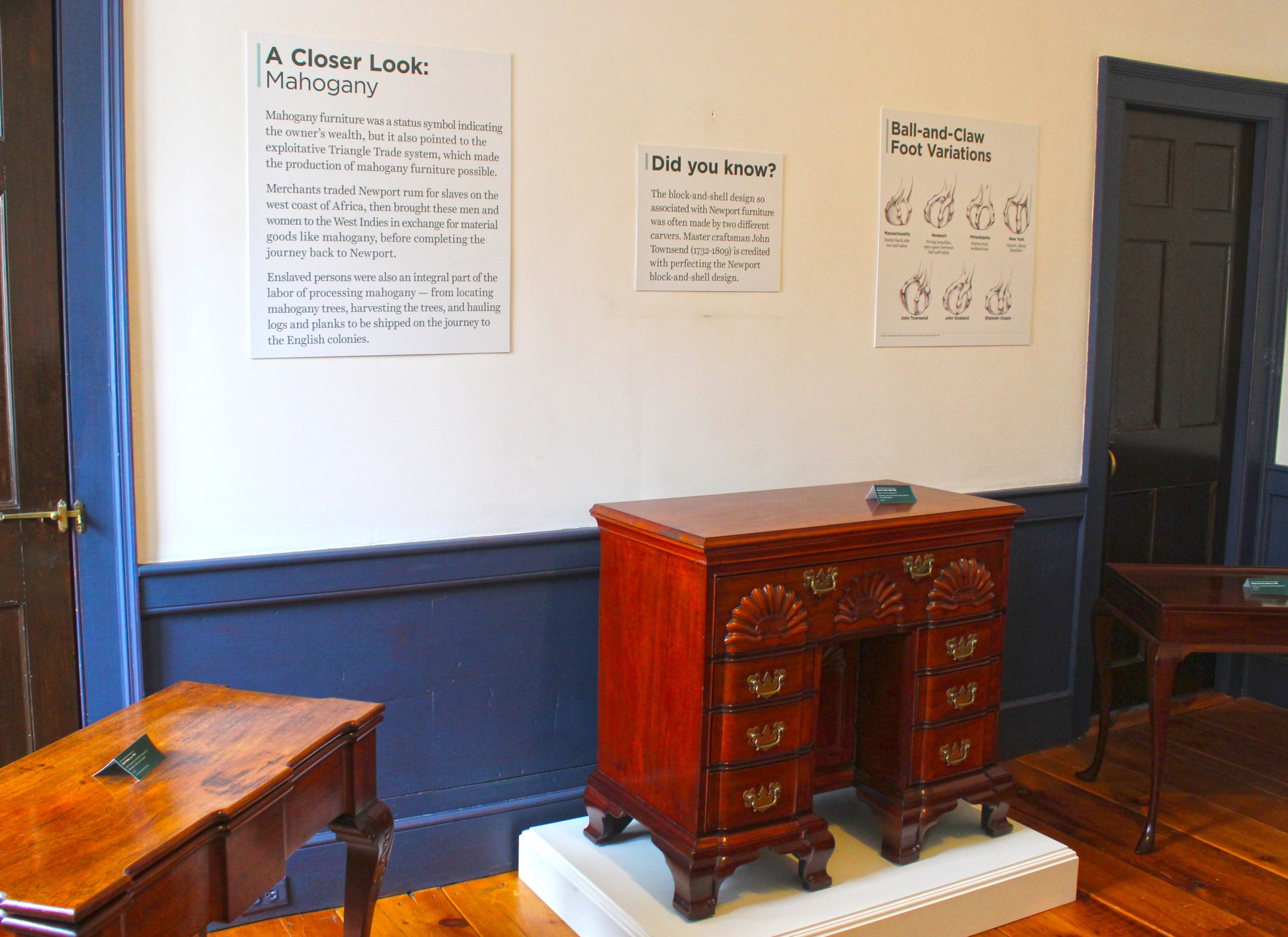This year, we are celebrating the 20th anniversary of Rough Point Museum being open to the public, and this is the second year that the Whitehorne House Museum will be open to the public after a long period of rethinking and reinterpretation. This seemed like a good moment to reflect back on the work we’ve done and the work we aspire to do at both museums. The NRF interpretive team is responsible for the “who, what, where, when, and why” of the museum content guests encounter before, during, and after their visits. In other words, we are storytellers. Although we interpret the past, this work is not static, or frozen in time; it is an ongoing process of learning, reviewing, revising, and retelling.
We have been actively researching, learning, and listening (to our colleagues, to members of our community, and to people who have expertise beyond ours) in order to tell more inclusive, relevant, honest, and broader stories related to Rough Point, Doris Duke’s legacy, and colonial Newport.
At Whitehorne House Museum, we take a close look at the global systems of the 18th century and the role Newport furniture played in these systems. This is a complicated and sometimes painful history, but it allows us to tell a fuller story. By better understanding our past, we can better understand our present, and what to strive for in the future. Continued research—and the incorporation of different perspectives and voices—is part of the work we do to understand the process of making in cabinetmaking workshops, the division of labor in the production of furniture, the commissioning process, and the display and arrangement of furniture in domestic spaces.
One specific narrative concerns the African heritage men and women in Newport who—despite forced enslavement and systemic injustice—not only survived, but thrived and who made and continue to make significant contributions to the forming of Newport as a successful port city, and later a cultural tourist destination. Enslaved and free people of color were an integral part of many industries in 18th-century Newport, but more research needs to be done to learn about the role enslaved and free people of color had in the furniture industry.
At Rough Point, Doris Duke’s Newport home, we tell the story of her life and legacy. Newport remained a special place for Doris, and one of her most important contributions was the shaping of its historic cityscape through the preservation and restoration of 18th century vernacular (or every day) colonial buildings, as well as her contributions to the cultural heritage sector today through her decision to leave her home and fine and decorative arts collection open and accessible for public enjoyment.
But Rough Point was also the home of other women and men who helped care for and maintain the estate and ensured the estate ran smoothly and efficiently—and their stories are important too. We incorporate the literal voices of former caretakers in our museum tours, exhibitions, and programs. For example, our recent research has enabled us to tell the story of Hulda Goudie (1884-1983), a cook who worked for nearly half a century in the Duke households.
This year’s exhibition, “Beyond Fortune: Myths & Truths of Doris Duke” is an example of listening to our visitors. In our 2019 exhibit we asked visitors what they wanted to know more about in regards to Doris, her family, and Rough Point. Answers are incorporated throughout the exhibition. In addition, we are routinely doing research on objects in the collection of Rough Point and Whitehorne as more scholarship becomes available. This includes doing archival research at Duke University and seeking out similar items in other museum and private collections that can help us learn more about the objects we have. Much of this research has centered on where and how Doris Duke collected and decorated at Rough Point, which has provided many insights into the layered, personal approach to her choices.
Lastly, this year we are also commemorating the 100th anniversary of the 19th amendment to the U.S. constitution, which guaranteed women citizens the right to vote. A selection of objects at Rough Point and Whitehorne House Museum look closely at the stories of women: as craftspeople, artists, laborers, “keepers” and collectors—and how women have shaped our contemporary ideas of culture, history, and heritage.
As we move into the next decade, we will continue to research, explore, and collaborate with others to uncover more stories that are a part of the broader narrative we tell at Rough Point Museum and Whitehorne House Museum. We know that there is more thoughtful work that needs to be done to incorporate the histories and contributions of those whose stories are not as well-known but who should be, including voices of people of color (in particular African heritage, Rhode Island Indigenous, and Latinx voices), domestic workers, women, and LGTBQ+ histories. We will continue to revise and reshape the ways we think about objects, history, memory, and legacy, in order to create more meaningful, relevant, and accessible experiences. We hope you will join us, either onsite at the museums or virtually from your own home, as we continue to explore and share more stories.
By Gina Tangorra, Interpretation & Visitor Experience Manager, and Kristen Costa, Curator


